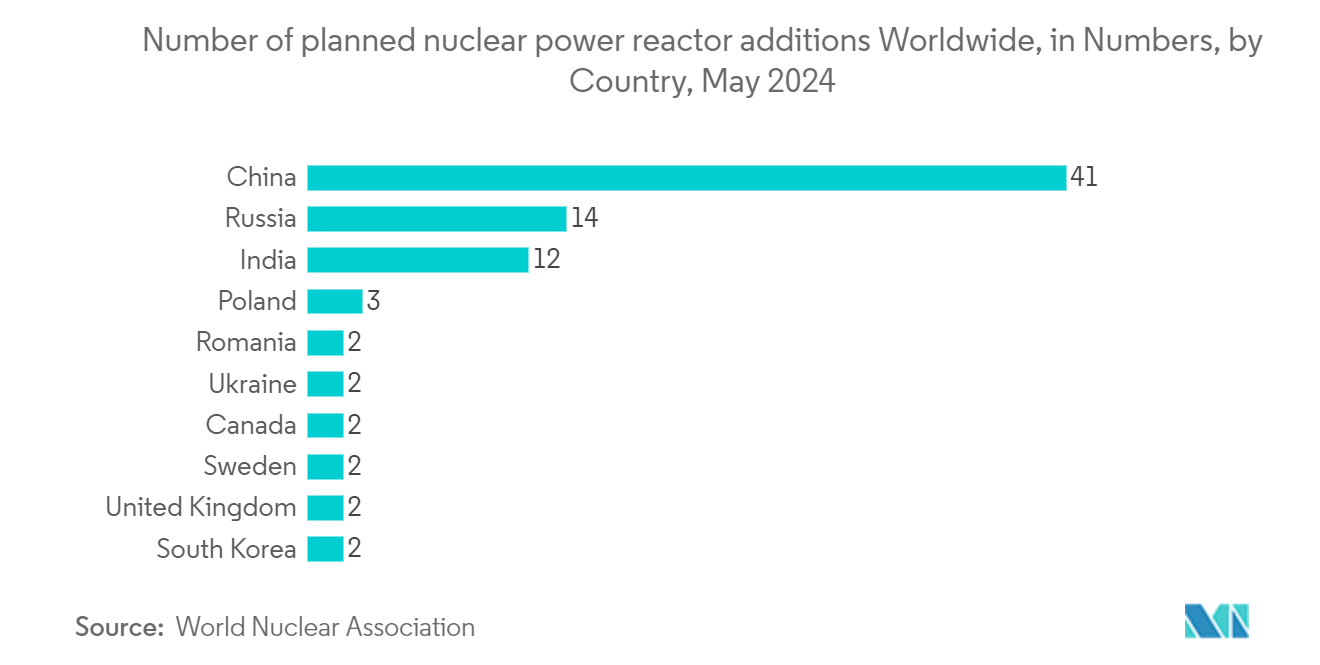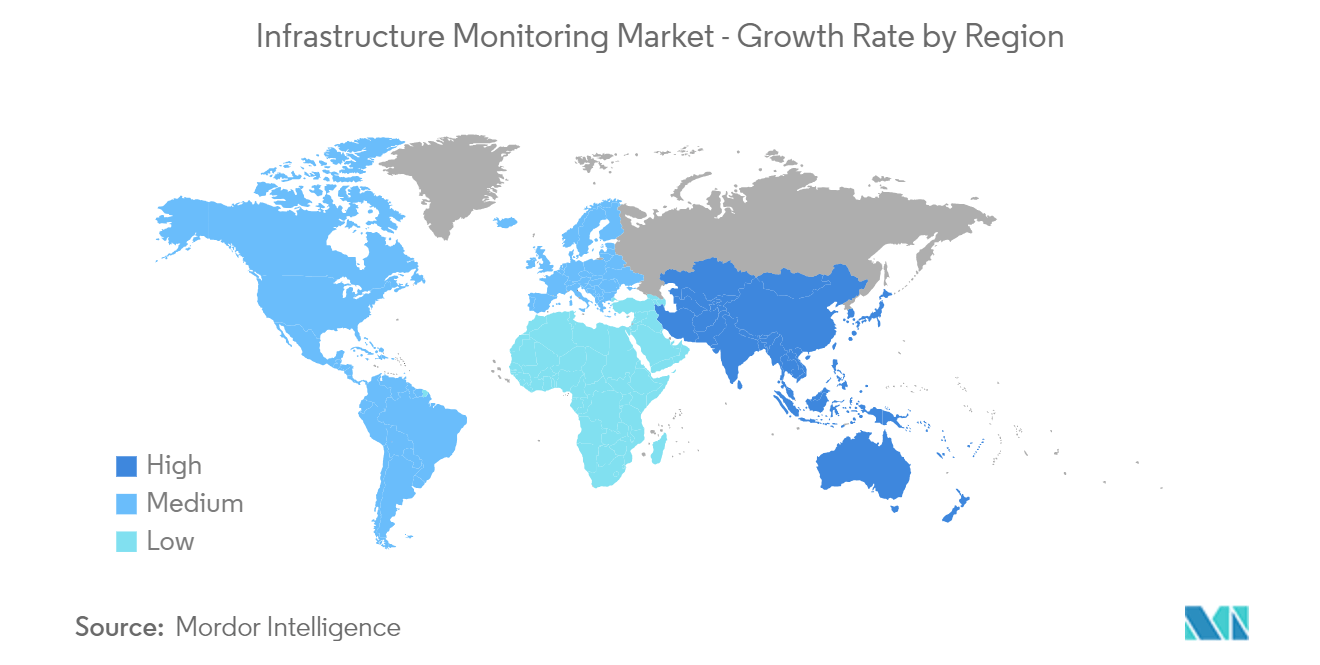Market Trends of Infrastructure Monitoring Industry
Energy Sector is Expected to Account for a Significant Share of the Market
- The energy segment is anticipated to get significant traction in the infrastructure monitoring market owing to the increasing demand for improving energy efficiency, sustainability, and cost-effective practices. Additionally, the growing importance of timely and predictive maintenance for energy sector assets provides a promising future for the growth of infrastructure monitoring in the energy sector.
- Further, the remote maintenance benefits that the Structural Health Monitoring Systems offer is extremely beneficial for both onshore and offshore systems in this sector. In a wind turbine, for instance, central data modules are being increasingly used to transmit data related to various structural conditions. Moreover, the introduction of cloud solutions has enabled this structural health monitoring data to be continually collected and evaluated for predictive maintenance. Most wind farm operators leverage Supervisory control and data acquisition (SCADA) data for remote monitoring and management.
- Moreover, Structural Health Monitoring solutions led to substantial cost savings through early detection, thereby facilitating higher investment in future predictive maintenance solutions. Duke Energy deployed Schneider Electric's Avantis PRiSM technology to save over USD 7.5 million through early crack detection in a turbine rotor. This has ensured the prevention of cost overruns through asset optimization and maintenance.
- In addition, non-invasive structural monitoring remains highly critical to the nuclear energy sector, which, by design, supports such technologies. The sensors in nuclear reactors are installed during concrete casting or by inserting them into holes that are drilled into the existing structures. Hence it requires monitoring and maintenance, especially for proper functioning and operations, thereby facilitating the market's growth significantly.
- Moreover, as per World Nuclear Association, as of May 2022, globally, there were 95 nuclear reactors planned worldwide. China recorded the largest figure with 33 units., followed by Russia and India with 27 and 12. Further, as nuclear power plants age, maintenance's importance increases, which is expected to create market opportunities for the market studied.

Asia-Pacific is Anticipated to Grow at a Significant CAGR
- The rapid expansion of the end-user industries that have major avenues for the application of structural health monitoring systems is leading to the expansion of the market in the region. For instance, according to World Nuclear Association, the Asia-Pacific region is witnessing significant growth in terms of electricity generating capacity and specifically nuclear power. The region is home to about 135 operable nuclear power reactors, and about 35 are under construction, with the fastest growth in nuclear generation expected in China. Thus, the need for maintenance of those power plants will also increase, which in return will create a market for structural monitoring.
- The application of infrastructure monitoring equipment within Aerospace and Defense is further driving the market. For instance, according to the Stockholm International Peace Research Institute (SIPRI), China and India have enhanced their nuclear arsenal over the last year. The Swedish think-tank pointed out that China is significantly modernizing its nuclear arsenal. According to the SIPRI Yearbook 2022, as of January 2022, China, Pakistan, and India have 350 165 and 160 nuclear warheads, respectively. Such existence mandates the need to monitor them so that they don't fall into the wrong hands.
- Further, with the development of smart cities, China has established more than 700 innovative city projects in more than 500 cities, covering big and small cities. The concept of smart city development has been incorporated in the 14th Five Year Plan (2021 to 2025) development goals of nearly all Chinese provinces and regions. With the acceleration of urbanization in China, smart city, as the internal realistic demand of urban development, has become the new wave of urban informatization.
- Moreover, there has been an increased count of aging infrastructure in China, making it essential for the usage of infrastructure monitoring services to identify and secure the integrity of these structures. As a result, the deployment of these solutions in the country is expected to grow rapidly over the forecast period due to the increasing need to conduct periodical assessment operations to preserve aging infrastructure and the need to optimize infrastructure expenses.
- Additionally, growing smart city projects are expected to provide opportunities for the growth of the market in the country. For instance, In India, The Smart City Mission is scheduled to be finished in 2023. Prime Minister Narendra Modi declared the initiative back in June 2015, and the Centre chose 100 cities from across India to participate. These cities will be developed to provide citizens with access to core infrastructure, a healthy and sustainable environment, and a decent standard of living using smart solutions. The mission's implementation timeline was extended till June 2023, making 2023 one of the most important years for India's Smart Cities.


